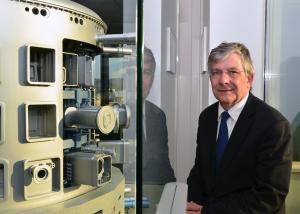Looking for "a model of engagement"
4 Mar 2013
-
Robert Arnoux
"ITER has to think of countries like Australia that can connect to the project in a very effective manner outside of a full membership arrangement and potentially form a new model of engagement," says ANSTO CEO Adi Paterson.
Fusion research is deeply indebted to Australia: it was the Australian Mark Oliphant who, under the guidance of Ernest Rutherford, realized the first fusion reaction at Cambridge's Clarendon Laboratory in 1933, and it was in Australia where the only tokamaks outside the Soviet Union operated between 1964 and 1969.
Over the past half-century, the country's small but active fusion community has developed a strong reputation, carrying out seminal theoretical work in plasma physics, developing significant plasma diagnostic innovations and making important contributions to fusion materials research.
Many Australian fusion physicists are closely associated to the ITER project. While Australia is not an official Member, these physicists are eager to see their country engage with it. As yet, no formal institutional collaboration has been established.
On his visit to ITER, last September, Australian National University physicist Matthew Hole, who chairs the Australian ITER Forum, shared his hopes for Australia to become more involved. "ITER," he said, "will define the fusion research program for at least the next generation. We're keen to be part of that enterprise ..."
How could Australia be more closely associated to ITER? The question was at the centre of the "very useful conversations" that Adi Paterson, the Chief Executive Officer of the Australian Nuclear Science and Technology Organisation (ANSTO), had with the ITER management when he visited here on 20 February.
"A project the size and scope of ITER cannot be limited to only seven Members," explains Paterson. "ITER has to think of countries like Australia that can connect to the project in a very effective manner outside of a full membership arrangement and potentially form a new model of engagement."
In this context, ANSTO has an important role to play. "My job is to help define and implement a coherent strategy and assist in strengthening the fusion community at home" adds Paterson. "We need to initiate exchanges, develop knowledge on the real questions of diagnostics, 3D fields, energetic particles, collision cross-sections, materials, neutronics..."
The "model of engagement" doesn't exist yet, but both sides are eager to create one. Seeing the reality of the project's progress comforted Paterson in his determination. Along with the obvious progress of construction and of components manufacturing, what makes ITER real in the eye of ANSTO's CEO is "the milestone that was accomplished last November. When the nuclear safety regulator says 'you can carry on', this is a huge accolade, and one that brought confidence to the whole fusion community worldwide."


